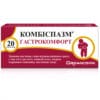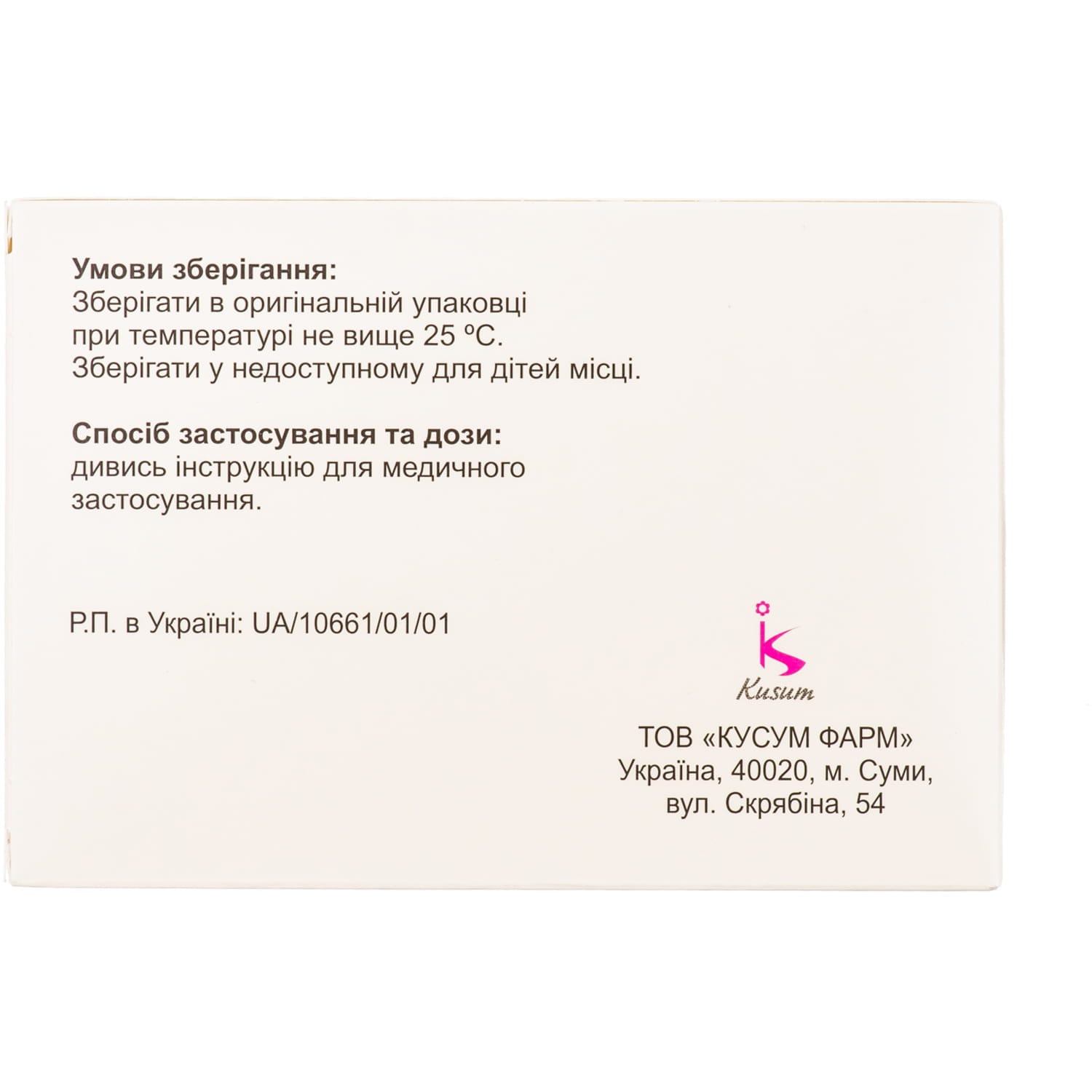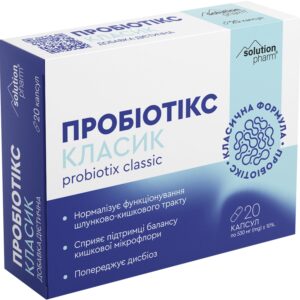We are temporarily not accepting orders from Canada due to the Canada Post strike.
Nous n’acceptons temporairement pas de commandes en provenance du Canada en raison de la grève de Canada Post.
We are temporarily not accepting orders from Canada due to the Canada Post strike.
Nous n’acceptons temporairement pas de commandes en provenance du Canada en raison de la grève de Canada Post.

Gazospazam coated tablets 30 pieces
$25.02
Gazospazam – combined remedy with dicyclomine and simethicone. Relieves abdominal pain, spasms, bloating and IBS symptoms, supporting digestive comfort.
Pharmacological properties
Pharmacodynamics. Gazospazam is a combination drug that combines two drugs: dicycloverine hydrochloride and simethicone.
Dicyclomine hydrochloride has an antispasmodic (relieves spasm of smooth muscles of the gastrointestinal tract, abdominal pain associated with spasm or stretching of the gastrointestinal wall) and antisecretory effect on the excretory glands. The effect of dicyclomine is achieved due to the specific anticholinergic (antimuscarinic) action on acetylcholine receptors, as well as a direct antispasmodic effect on smooth muscles. Studies have shown that dicyclomine is equally effective in spasms induced by acetylcholine and barium chloride. The effect of atropine in spasm caused by barium chloride is 200 times weaker than that in acetylcholine-induced spasm. The mydriatic effect of dicyclomine and its effect on salivary gland secretion are insignificant compared to the effects of atropine (1/500 and 1/300, respectively).
Simethicone is a surfactant, defoamer. The mechanism of action is based on reducing the surface tension of gas bubbles, which contributes to the free removal of gases from the gastrointestinal tract or their absorption by the intestinal wall. Simethicone improves the quality of radiographs and sonograms, provides better distribution of contrast agents on the intestinal mucosa.
Pharmacokinetics. Dicyclomine hydrochloride is rapidly absorbed from the gastrointestinal tract after oral administration, Cmax in blood plasma is reached after 60-90 min; excreted mainly in the urine (79.5% of the administered dose), partially in the feces (8.4%). T½ – 1.8 h. The average volume of distribution is 3.65 l/kg.
Simethicone is a physiologically and chemically inert substance; it is not absorbed and is excreted unchanged after passing through the digestive tract.
Indication
Treatment of conditions accompanied by spasm of smooth muscles of the gastrointestinal tract and flatulence, as well as associated abdominal pain. Treatment of spastic conditions of the gastrointestinal tract, including colitis, intestinal colic, irritable bowel syndrome, spastic constipation. As an additional treatment of organic diseases of the gastrointestinal tract in colitis, diverticulitis, enteritis, gastritis, ulcers.
Application
Dosage for adults and children over 12 years of age: 1 tablet 4 times a day (5-10 ml of suspension 3-4 times a day); the maximum daily dose is 4 tablets (40 ml of suspension). The bottle must be shaken well before using the suspension.
The drug is recommended to be taken before or after meals. It is not recommended to take the drug for more than 5 days.
Contraindication
Hypersensitivity to the components of the drug. obstructive diseases of the gastrointestinal tract, paralytic ileus, pyloric stenosis of the gastrointestinal tract with obstruction, severe ulcerative colitis, reflux esophagitis. obstructive diseases of the biliary tract. renal failure, obstructive diseases of the urinary tract, prostate adenoma with difficulty urinating. glaucoma. myasthenia gravis. thyrotoxicosis. heart failure, unstable state of the cardiovascular system with acute bleeding.
Side effects
The following side effects are related to the group of anticholinergic drugs, but not all of them have been observed with the use of dicycloverine hydrochloride:
Gastrointestinal tract: dry mouth, loss of taste, anorexia, nausea, vomiting, indigestion, feeling of bloating, abdominal pain, constipation.
From the side of the central nervous system: tinnitus, headache, drowsiness, weakness, nervousness, psychosis, numbness, dizziness, coma, confusion and / or agitation (especially in elderly patients), dyskinesia, insomnia, disorientation, short-term memory loss, hallucinations, dysarthria, ataxia, euphoria, inadequate emotional reactions (symptoms decrease 12-24 hours after dose reduction).
On the part of the organ of vision: blurred vision, double vision, pupil dilation, accommodation paralysis, increased intraocular pressure (short-term atropine-like effects that disappear after discontinuation of dicyclomine).
Skin/allergic reactions: hypersensitivity reactions, including allergic dermatitis, pruritus, rash, urticaria, erythema, drug idiosyncrasy, angioedema, anaphylactic shock.
From the genitourinary system: difficulty urinating, urinary retention.
Cardiovascular system: tachycardia, feeling of increased heartbeat.
From the respiratory system: shortness of breath, apnea, nasal congestion.
Other effects: decreased sweating, nasal congestion, sneezing, swelling of the throat mucosa, suppression of lactation.
Special instructions
At high ambient temperatures during treatment, overheating of the body is possible (increased body temperature and heat stroke due to decreased sweating). If appropriate symptoms appear, it is necessary to discontinue the drug and consult a doctor.
Diarrhea may be an early symptom of incomplete intestinal obstruction, especially in patients with an ileostomy or colostomy. In such cases, treatment with the drug is inadequate and may be harmful.
In individuals with individual hypersensitivity to anticholinergics, the drug may cause CNS effects such as confusion, disorientation, ataxia, increased fatigue, or vice versa – euphoria, excitement, insomnia, affective state. Usually these symptoms disappear within 12-24 hours after discontinuation of the drug.
Gazospazam should be used with caution in patients with autonomic neuropathy, liver or kidney disease, ulcerative colitis (taking high doses can cause paralytic ileus and the development or exacerbation of such a serious complication as toxic megacolon), hypertension, coronary artery disease, congestive heart failure, tachyarrhythmia, tachycardia, hiatal hernia, and prostatic hypertrophy.
Excipients: The tablet formulation contains lactose. If you have been told by your doctor that you have an intolerance to some sugars, contact your doctor before taking this medicinal product.
Use during pregnancy and breastfeeding. The safety of treatment with dicyclomine and simethicone during pregnancy has not been established, so the drug should not be used in pregnant women.
Since dicycloverine hydrochloride passes into breast milk, the drug should not be used during breastfeeding.
Children: Do not use in children under 12 years of age.
Ability to influence the reaction rate when driving vehicles or working with other mechanisms. Dicyclomine hydrochloride can cause drowsiness and blurred vision, therefore it is not recommended to drive vehicles and mechanisms that require increased concentration of attention and high speed of psychomotor reactions while taking the drug.
Interactions
Amantadine, class I antiarrhythmic drugs (e.g. quinidine), antihistamines, antipsychotics (e.g. phenothiazines), benzodiazepines, MAO inhibitors, narcotic analgesics (e.g. meperidine), nitrates and nitrites, sympathomimetics, tricyclic antidepressants and other drugs with anticholinergic activity may enhance the effects or side effects of dicycloverine.
Anticholinergic drugs can neutralize the effect of antiglaucoma drugs, so the drug should be prescribed with caution in cases of increased intraocular pressure and simultaneous use of corticosteroids.
Anticholinergics may alter the gastrointestinal absorption of some drugs, particularly long-acting digoxin, which may cause increased plasma digoxin concentrations.
Dicyclomine may neutralize the effects of drugs that alter gastrointestinal motility, such as metoclopramide.
Since antacids may reduce the absorption of anticholinergic drugs, their concomitant use should be avoided.
The inhibitory effect of anticholinergic agents on gastric acid secretion can neutralize drugs used to treat achlorhydria and study gastric secretion.
Overdose
Symptoms: headache, nausea, vomiting, dry mouth, difficulty swallowing, blurred vision, dilated pupils, hot and dry skin, dizziness, tachycardia, change in respiratory rate, psychomotor agitation. Curare-like effects (neuromuscular blockade, feeling of weakness in muscles and paralysis) are possible.
Treatment is symptomatic; in the first hours, it is recommended to induce vomiting and perform gastric lavage.
Storage conditions
In the original packaging at a temperature not exceeding 25 °C.
You may also like







Reviews
There are no reviews yet.